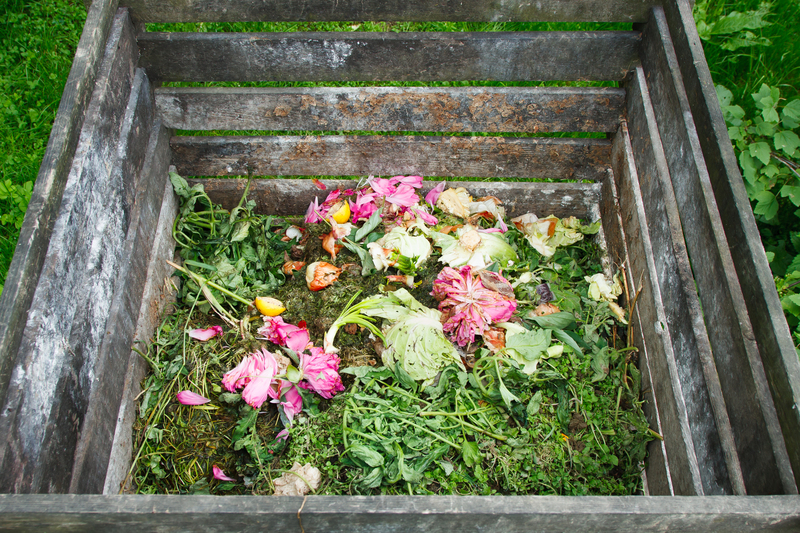A Guide to Eco-Friendly PPE Waste Management
The COVID-19 pandemic has led to a dramatic surge in the use of personal protective equipment (PPE) worldwide. From face masks and gloves to gowns and face shields, the reliance on PPE has been critical in safeguarding public health. However, the environmental impact of disposable PPE cannot be ignored. Improper PPE waste management is causing mounting environmental problems, including plastic pollution, landfill overload, and harm to wildlife.
To address these issues, it is imperative to implement eco-friendly PPE waste management strategies. This comprehensive guide will explore the environmental risks of PPE waste, present best practices for green disposal and recycling, and provide actionable steps towards a more sustainable future.
Understanding PPE Waste and Its Environmental Impact
What is PPE Waste?
PPE waste refers to used or discarded personal protective equipment. Common items include:
- Face masks (surgical masks, N95 respirators, cloth masks)
- Disposable gloves (latex, nitrile, vinyl)
- Protective gowns and coveralls
- Face shields and goggles
- Shoe covers and hairnets
Environmental Dangers of PPE Waste
The improper disposal of PPE can create significant environmental and health risks:
- Plastic Pollution: Most disposable PPE is made from non-biodegradable plastics such as polypropylene, which can persist in the environment for hundreds of years.
- Wildlife Threats: Discarded masks and gloves can entangle, choke, or be ingested by birds, marine life, and other animals.
- Landfill Overload: PPE waste adds huge volumes to landfills, increasing methane emissions and leachate pollution.
- Toxic Microplastics: As PPE breaks down, it releases microplastics that contaminate soil and water and enter the food chain.
The environmental impact of PPE waste is far-reaching and long-lasting, making eco-friendly PPE waste management an urgent priority.

The Principles of Eco-Friendly PPE Waste Management
An effective eco-conscious PPE disposal system should follow the core principles of sustainability: Reduce, Reuse, Recycle, and Recover.
- Reduce: Minimize PPE usage by opting for reusable alternatives where possible, and using PPE only when necessary.
- Reuse: Choose washable, reusable PPE such as cloth masks or washable gowns instead of single-use items.
- Recycle: Separate recyclable PPE waste and send it for proper recycling. This requires clean, segregated collection.
- Recover: Employ energy recovery techniques, such as incinerating non-recyclable PPE in waste-to-energy plants (with proper emission controls).
By applying these principles, organizations and individuals can adopt responsible environment-friendly PPE waste solutions that reduce pollution and conserve resources.
Best Practices for PPE Waste Collection and Segregation
Proper Segregation at the Source
One of the most critical steps in green PPE waste management is segregating waste at the point of use. This helps prevent the contamination of recyclable materials and ensures safe handling of potentially infectious PPE.
- Designate Clearly Labeled Bins: Provide different color-coded bins for general waste, PPE waste, recyclables, and biohazard waste.
- Educate Users: Post clear signage showing what items go in each bin. Provide staff training on proper segregation.
- Use PPE Waste Bags: Collect used PPE in leak-proof, tear-resistant bags to prevent exposure or contamination.
Safe Collection and Handling
- Wear Gloves and Masks: Personnel handling PPE waste should always wear appropriate protection.
- Avoid Overfilling Bins: Bins should be emptied regularly to prevent overflow and reduce handling risks.
- Seal and Label PPE Waste: Bags containing used PPE should be securely tied and labeled as "Infectious Waste" or "PPE Waste."
Eco-Friendly PPE Disposal Options
Sanitizing and Reusing PPE
Where practical, choose reusable PPE that can be washed and sterilized for multiple uses, such as cloth masks or washable gowns. For settings where reuse is not feasible, consider:
- UV Sterilization: Certain types of PPE, especially polycarbonate face shields, can be disinfected using ultraviolet-C (UV-C) light.
- Autoclave Processing: Some PPE items can be safely sanitized using steam sterilization in autoclaves.
Recycling PPE Waste
Many traditional PPE materials are difficult to recycle, but new innovations in PPE recycling are emerging:
- Specialized PPE Recycling Programs: Companies like TerraCycle offer collection boxes for used PPE, which they recycle into plastic lumber, benches, and new products.
- Melt-Processing Technologies: Certain mask and gown materials can be melted down and reformed into usable plastic resins.
- Collaboration with Local Recyclers: Work with local authorities or recycling firms who accept PPE waste, especially in healthcare and laboratory settings.
Energy Recovery Solutions
- Waste-to-Energy (WtE): Non-recyclable PPE can be incinerated in modern energy recovery facilities, where the heat generates electricity. Ensure the facility meets air pollution standards.
Safe Landfilling
When no other options are available, ensure PPE waste is securely contained and sent to engineered landfills with leachate and gas collection measures. However, this should be considered a last resort.
Reducing PPE Waste at the Source
Opt for Reusable PPE
The most effective way to minimize PPE waste is to reduce reliance on single-use items:
- Cloth Masks: Choose multi-layered, washable masks for general use.
- Reusable Gowns: Healthcare and industrial settings can switch to washable, autoclave-safe gowns.
- Face Shields: Invest in durable, disinfectable face shields for prolonged use.
Educate and Train Staff
- Awareness Campaigns: Regularly train staff and users on the environmental consequences of PPE waste and promote sustainable behavior.
- Proper Usage Guidelines: Discourage unnecessary use or double-gloving, and reinforce appropriate donning and doffing practices to avoid discarding PPE prematurely.
Developing an Eco-Friendly PPE Waste Management Policy
Organizations can make a major difference by implementing a formal eco-friendly PPE waste management policy. This may include:
- Appointing a PPE waste coordinator to oversee safe collection, segregation, and disposal.
- Establishing PPE recycling partnerships with specialized firms or local authorities.
- Tracking and reporting PPE waste volumes to monitor progress towards sustainability goals.
- Incorporating sustainability requirements into PPE procurement (e.g., buying compostable or recyclable masks).
Innovations in Sustainable PPE Materials
Rapid advances are being made in eco-friendly PPE design and materials, helping reduce the environmental footprint of protective equipment:
- Biodegradable Masks: Manufacturers now offer masks made of plant-based fibers, cellulose, and other compostable materials.
- Compostable PPE: Gowns, gloves, and other items made from bioplastics or natural materials break down more quickly after disposal.
- Recycled PPE: Some brands produce PPE from recycled plastics, supporting a more circular economy.
Choosing these sustainable options, when available, is a powerful way to support eco-friendly PPE use and disposal.
Community Initiatives for PPE Waste Reduction
Communities and local governments are crucial players in promoting green PPE waste habits. Successful initiatives include:
- Public Drop-Off Points: Establish safe, accessible PPE disposal bins in public areas.
- Clean-Up Campaigns: Organize PPE waste clean-up drives in parks, waterways, and shorelines.
- Awareness Drives: Run public education campaigns on the dangers of littered PPE and correct disposal methods.
Regulatory Guidelines for Environmentally Friendly PPE Waste Management
Numerous environmental agencies now recommend responsible PPE waste management to protect the ecosystem and public health. Key regulatory points include:
- Proper Labelling: Clearly mark PPE waste containers as "Hazardous" or "Infectious" as required by local regulations.
- Mandatory Segregation: Separate PPE from regular waste streams at all organizational levels.
- Authorized Disposal Routes: Use only government-approved waste disposal or recycling services for PPE.
Follow local and international guidance--such as those issued by the World Health Organization (WHO) and the Environmental Protection Agency (EPA)--to ensure safety and compliance.

Future of Sustainable PPE Waste Solutions
The next generation of eco-friendly PPE waste disposal will likely involve smart tracking, advanced recycling, and bio-based materials. Researchers are working on:
- Smart Waste Bins: Automated bins that sort and disinfect PPE waste with minimal human interaction.
- Enzymatic Recycling: Using enzymes that can break down polypropylene and similar plastics.
- Bioplastics Research: Continued investment in materials derived from corn starch, algae, or sugarcane.
These innovations could transform the entire PPE lifecycle--making it safer, smarter, and more sustainable.
Conclusion: Taking Action for Planet-Friendly PPE Waste Disposal
The challenge of eco-friendly PPE waste management is significant--but not insurmountable. By adopting responsible use, safe segregation, recycling, and green procurement, we can minimize the ecological impact of crucial protective equipment. Governments, organizations, and individuals each have a role to play in building a sustainable PPE waste future.
- Opt for reusable or biodegradable PPE whenever possible
- Implement strict segregation and collection policies
- Support innovative PPE recycling programs
- Educate teams and communities on responsible PPE habits
Together, we can protect both public health and our planet. Make the switch today to eco-friendly PPE waste management and be part of the global movement towards a cleaner, greener future.
Further Reading and Resources
- World Health Organization (WHO): PPE and waste disposal recommendations
- Environmental Protection Agency (EPA): Medical and PPE waste management guidance
- TerraCycle PPE recycling programs
If you found this guide informative, help spread the word about sustainable PPE waste management by sharing it with your colleagues and community.